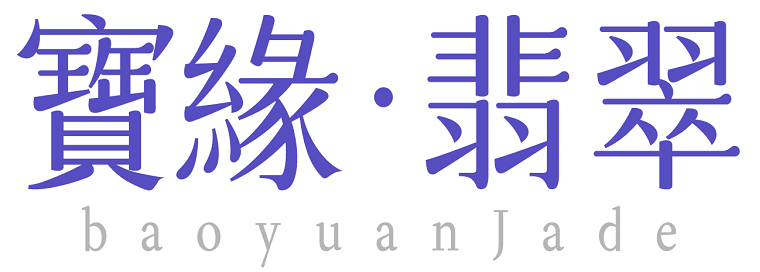Help Center
Defect description
The flaws of jadeite refer to the characteristics that affect the beauty and durability of jadeite during the natural formation process or acquired processing and use. In other words, perfection plays a decisive role in its value. If you want to observe whether there are dark cracks or impurities in the jadeite, you can also put a pen torch behind it, and you can see it at a glance when it is on. The following Baoyuan will introduce you to several natural jadeite flaws.
1.stone pattern
Jadeite occurred due to the extrusion of external force during the formation of a long-term complex geological environment.
Local dislocation, the stone pattern of jadeite is different from the crack, the stone pattern of jadeite does not damage the internal structure of jadeite, so it will not prevent the transmission of light. Touching with your hand has no sense of picking, and does not affect the beauty and durability of jadeite.
2.crack
There are fractures on the surface of jadeite, and the cracks are generally caused by the day after tomorrow. Most of them are external cracks, which are visible to the naked eye. There is a slight feeling of pulling with fingers, and there is no filler in the middle, which affects the durability of the jadeite and has no effect on the appearance.
3.cotton thread
The white flocculent lines in jadeite are an unavoidable process in post-processing, so they are very common and normally will not affect the durability and beauty of jadeite.
4.black dot
The crystal particles in jadeite cannot be touched by mobile phones, which seriously affects the beauty of jadeite.
5.mottled
Jadeite has color to some extent, and the color is large and small. Small area or dotted green, red, yellow, their existence can make the whole jade jewelry more beautiful and more characteristic, called pretty color; small area or dotted black, brown, gray, etc., their existence can make the whole jadeite jewelry more beautiful and more characteristic, called pretty color; Jade jewelry is more ugly and lower-grade, called variegated; dotted black, brown, gray, etc. are also called dirty spots.
6.To blame
The line-shaped fracture of jadeite is usually used separately, such as small locks, small cracks, etc. The tresses are inside and have not broken to the surface, so their impact on durability is relatively low; if they are cracked outside, they can usually be picked with a fingernail. Because they are in direct contact with the outside, they have a greater impact on the durability of the jewelry and are more likely to lead to breakage. In fact, the essence of the two is the same. If the linear fracture is left in the carving, it is a lock, and if it is left outside, it is a crack.
7. miscellaneous tendons
During the formation of jadeite, some impurities will be mixed into it, and eventually exist in the ground of jadeite, forming variegated objects like tree roots and tendons, which are called miscellaneous tendons. Therefore, the miscellaneous tendons are naturally formed. Although they are visible to the naked eye, they are not cracks and have little effect on the appearance and quality of the jade bracelet.
8.stone flower
There are often lumps in jadeite that are slightly less transparent than the earth. The more dry and lumpy ones are called "stone brains", the more scattered ones are called "reed flowers", and the ones that look like cotton wool are called "cotton". ;, The fine drifting is called "snowflake".
9.Emerald
There are three different manifestations of jadeite's emerald nature, flocculent, fly wings, and orange peel effect. Emerald's "emerald nature" refers to the unique morphological characteristics of jadeite that other substances do not have. Including visual effects, density, hardness, color, and light transmission and refraction effects, it has little effect on the quality of jadeite.
© Copyright 2022 寶緣翡翠. All Rights Reserved.


輕鬆創建一個漂亮的
響應式網站
一切盡在您的指尖
功能豐富的小部件+輕鬆共享模塊
